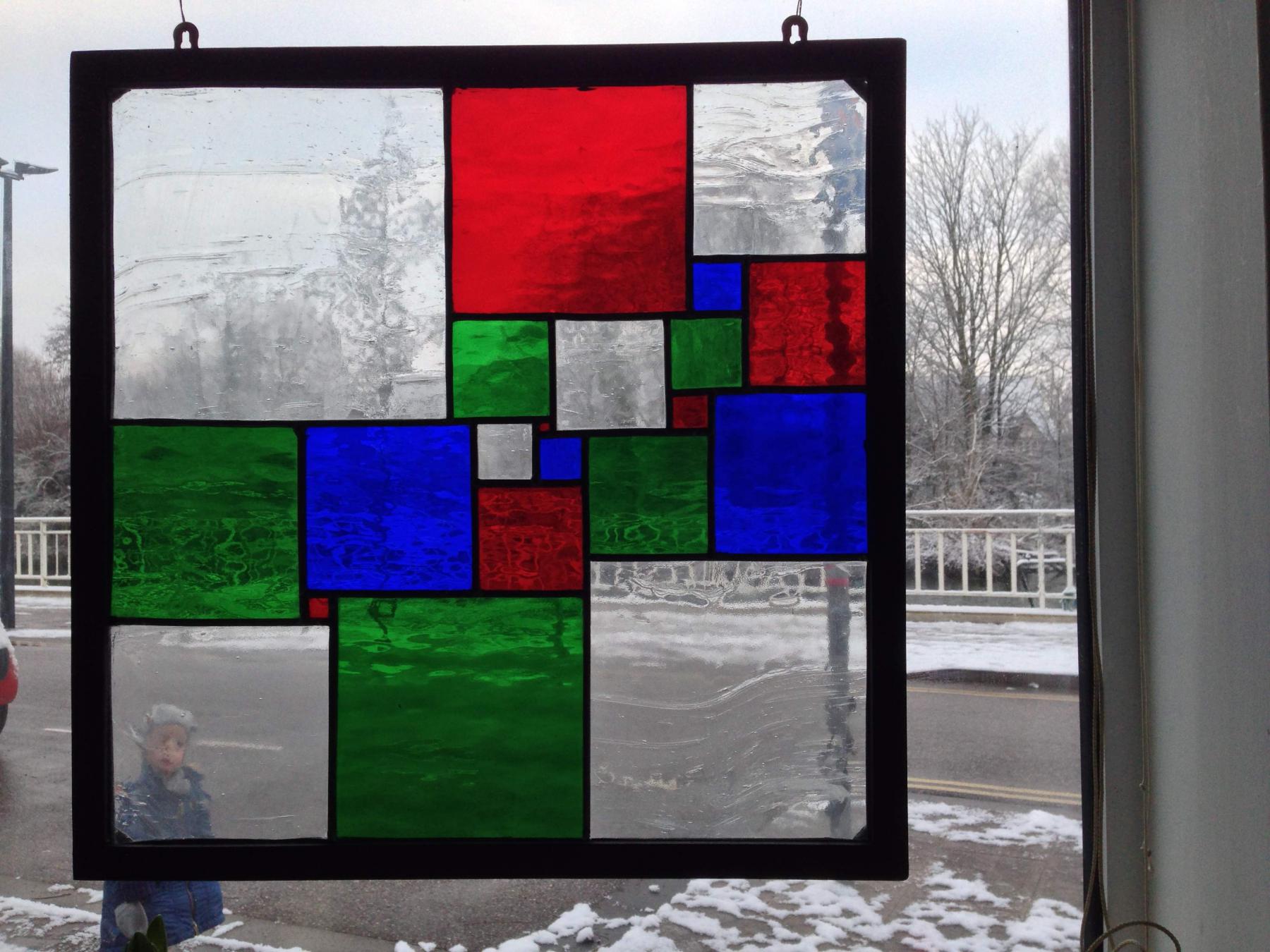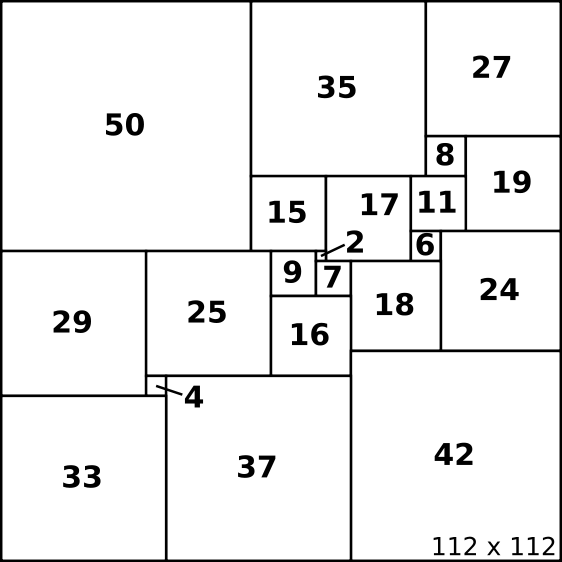Squaring the square, in glass
As of the 23rd May 2022 this website is archived and will receive no further updates.
understandinguncertainty.org was produced by the Winton programme for the public understanding of risk based in the Statistical Laboratory in the University of Cambridge. The aim was to help improve the way that uncertainty and risk are discussed in society, and show how probability and statistics can be both useful and entertaining.
Many of the animations were produced using Flash and will no longer work.
Here is my latest stained glass effort, seen on a snowy day.

It is a 'square of squares', where all the constituent squares are of different sizes. Here are the dimensions -

It is copied from the logo of the Trinity Mathematical Society, who point out that it is the unique smallest simple squared square (smallest in that it uses the fewest squares, and simple in that no proper subset of the squares of size at least 2 forms a rectangle). It was proved to be the smallest such square by Duijvestijn in 1978, but this was by exhaustive computer search, which seems a bit like cheating.
There is a fine Wikipedia site which contains more than you ever wish to know about squaring-the-square.
Challenge
I wanted to only use 4 colours without any square touching another of the same colour, and of course I knew this is possible due to the 4-colour theorem. But I wanted the four large outer squares to be 'white' (in order to increase the Mondrian appeal). It took some effort and trial-and-error to find a 4-colouring with this property. Are there others?
- david's blog
- Log in to post comments

Comments
Perhaps
Fri, 01/02/2013 - 4:31pm
Permalink
More solutions
Perhaps
Fri, 01/02/2013 - 4:36pm
Permalink
6 more
whuber
Wed, 06/02/2013 - 4:29pm
Permalink
All solutions
david
Wed, 06/02/2013 - 5:19pm
Permalink
wonderful!
A beautiful array. It is tempting to try a vast stained glass window featuring all of these!
Perhaps
Wed, 06/02/2013 - 6:50pm
Permalink
Field 11 and 19 are the same
whuber
Wed, 06/02/2013 - 9:20pm
Permalink
Correction
jhodsdon
Thu, 26/09/2013 - 4:31pm
Permalink
Challenge